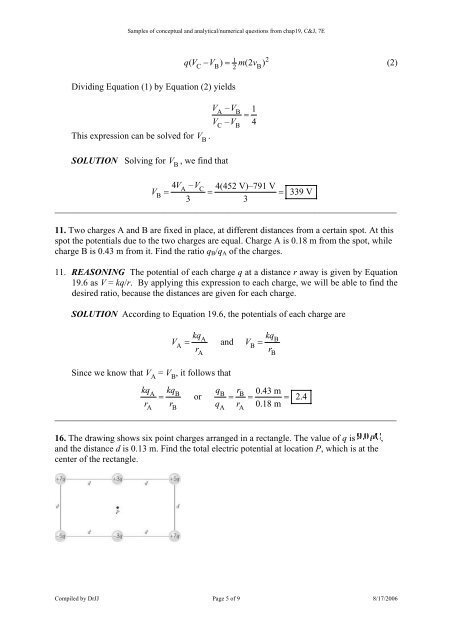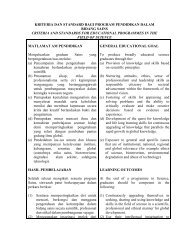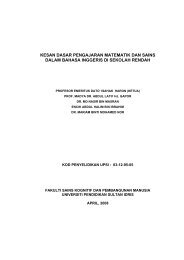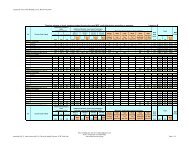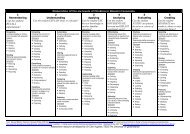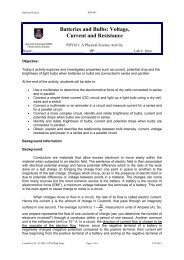Basic Physics II Evidences - DrJJ - UiTM
Basic Physics II Evidences - DrJJ - UiTM
Basic Physics II Evidences - DrJJ - UiTM
You also want an ePaper? Increase the reach of your titles
YUMPU automatically turns print PDFs into web optimized ePapers that Google loves.
Samples of conceptual and analytical/numerical questions from chap19, C&J, 7E1C B 2 BDividing Equation (1) by Equation (2) yieldsVA– VB1VC– V =B4This expression can be solved for VB.2qV ( − V ) = m (2 v )(2)SOLUTION Solving for VB, we find that4 VA– VC4(452 V)–791 VVB= = = 339 V3 3___________________________________________________________________________11. Two charges A and B are fixed in place, at different distances from a certain spot. At thisspot the potentials due to the two charges are equal. Charge A is 0.18 m from the spot, whilecharge B is 0.43 m from it. Find the ratio q B /q A of the charges.11. REASONING The potential of each charge q at a distance r away is given by Equation19.6 as V = kq/r. By applying this expression to each charge, we will be able to find thedesired ratio, because the distances are given for each charge.SOLUTION According to Equation 19.6, the potentials of each charge areVAkqAkq= and VB=rrABBSince we know that V A= V B, it follows thatkqA kqB qB rB0.43 m= or = = = 2.4rA rB qA rA0.18 m___________________________________________________________________________16. The drawing shows six point charges arranged in a rectangle. The value of q is ,and the distance d is 0.13 m. Find the total electric potential at location P, which is at thecenter of the rectangle.Compiled by <strong>DrJJ</strong> Page 5 of 9 8/17/2006


